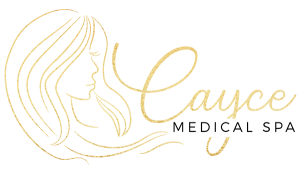What Can You Do About Spider Veins?
Have you been troubled by the appearance of small, dark veins on your legs or face?
If so, you’re far from alone. It’s estimated that over half of all women and as many as 40% of men develop spider veins. Most people over 50 will get them at some point.
You may also have heard the terms “varicose veins” and “spider veins” used interchangeably. What’s the difference?
Varicose veins are twisted, enlarged veins that most commonly occur in the legs. Spider veins are a smaller type of varicose veins and may appear on the legs or face. They are characterized by a spiderweb-like pattern. However, spider veins are less likely to bulge as is common with larger varicose veins.
While spider veins are most commonly recognized by their distinctive appearance, they may be associated with physical discomfort in some people. The good news is that most patients can be successfully treated with minimally invasive procedures and no downtime.
Let’s take a closer look at the symptoms, causes and risk factors associated with spider veins. We’ll also go over two common spider vein treatments available at Cayce Medical Spa: sclerotherapy and laser treatments.
What Are Spider Veins?
Spider veins typically appear in a twisted pattern underneath the skin and have a red, blue or dark purple color. Some people may develop skin discoloration near the affected area.
Aside from their cosmetic appearance, patients may experience physical symptoms near the location of the spider veins:
- Aching or heavy feeling in the legs
- Burning, throbbing, swelling, itching or cramps near the affected area
- Discomfort getting worse after standing or sitting for long periods of time
What Causes Spider Veins?
Both varicose veins and spider veins occur when the valves inside our veins begin to weaken. When this happens, blood is allowed to flow backward and pool inside the vein. This is what gives spider veins their familiar darkened appearance. Leg veins must work against gravity in order to move the blood upward, which is why spider veins most often appear in the legs.
What Are the Risk Factors for Spider Veins?
Older people more likely to experience spider veins, because our blood vessels are subject to more wear and tear as we age. Here are a few other risk factors:
- Gender: Women are at greater risk than men. Spider veins may be associated with the hormonal changes that occur before your period, during pregnancy and during menopause.
- Pregnancy: In addition to hormonal changes, your volume of blood increases during pregnancy. This places added pressure on your blood vessels, which may cause spider veins to appear.
- Genetics: If other members of your family have had spider veins, you may be more likely to get them.
- Obesity: Excess weight may put more stress on your veins.
- Standing or sitting for too long: Blood flow may be impeded if you stay in the same position for too long.
You may be able to reduce your risk of spider veins by getting regular exercise, maintaining a healthy weight and choosing a high-fiber, low-sodium diet. It’s also a good idea to alternate between standing and sitting regularly. So get up from that desk and take a stroll throughout the day!
What Are the Best Treatments for Spider Veins?
In some cases, spider veins can be prevented through self-care. Regular exercise, weight management and wearing comfortable clothing are good ways to promote healthy circulation. Other patients find that wearing compression stockings helps to regulate blood flow more effectively. In addition to these lifestyle habits, there are safe, effective professional treatments available for lasting results.
Sclerotherapy
Sclerotherapy is the most effective and the most common treatment for spider veins affecting the legs. A solution called polidolcanol is injected into the vein, causing it to constrict and shrink away from the vascular wall. Eventually the vein will disintegrate so that it is no longer visible. In addition, overall blood flow improves in the remaining veins.
Patients may require two or three sclerotherapy treatments, depending on each individual case. Spider veins typically disappear within three to six weeks after completing treatment, while larger varicose veins may take three or four months.
You can expect to feel a slight stinging sensation during treatment. After the injection is completed, you will be able to return home and resume regular activities. You may be advised to wear compression stockings for two to three weeks and take regular walks to encourage good blood flow.
Laser Treatments
Laser treatments are recommended for those wanting to get rid of facial spider veins. They may also be helpful in treating the legs.
This method delivers pulses of light energy which causes blood to coagulate inside the vein. The vessel is eventually destroyed, and blood flow is redirected to deeper veins away from the skin’s surface. Up to three treatments may be required to achieve the desired results. Smaller spider veins may disappear immediately, while larger ones may take from one to three months. In some patients, the veins will initially darken before gradually fading away.
Most people are able to return to regular activities the next day after treatment. Some may be advised to wear compression stockings. You will also need to protect the treated area from sun exposure for up to three to four weeks.
If you’re wondering what to do about spider veins, we encourage you to schedule an appointment at Cayce Medical Spa. We’ll assess your symptoms, answer your questions and design a personalized treatment plan to achieve the results you’re looking for. You can reach us at 573-234-6930 or contact us online at any time!
